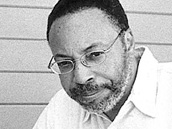Bridges Over the Saint John River
by Nela Rio & M. Travis Lane (eds.)
Fredericton, NB: Broken Jaw, 2011
143 pp. $21
Glorious Light: The Stained Glass of Fredericton
by John Leroux
Kentville, NS: Gaspereau, 2011
160 pp. $35
Fredericton is vital to two new works. Bridges Over the Saint John River gathers English and Spanish poets. John Leroux’s Glorious Light is a rapturous and lovely depiction of “The Stained Glass of Fredericton.†Fredericton is New Brunswick’s capital, and it houses an “extraordinary†Chapter of the Academia Iberoamericana de Poesia. So editors Nela Rio and M. Travis Lane, Hispanic and Anglo, unite poets from these two languages (plus Jo-Anne Elder, an Acadienne), offering translations of one tongue into the other. Thus, they build cultural “Bridges over the Saint John River,†i.e., “Los puentes del Rio San Juan.â€
Those who doubt – or hate – multiculturalism need to read books like this one. Every anthology of a Canadian sub-culture or minority language reminds us of how similar we are – not only as Canucks, but, simply, as humans. Even so, the merit of Los puentes/Bridges depends on the poems. Good.
Editor Lane (ex USA), translated by Gabriela Etcheverry, racks up fine images: “Frost chimneys like inukshuks / judder together, a buried horde / streaked like moss agate or mutton jade, / their melt-milk scumming the silty bay….†One sees her affinity to Liz Bishop (1911-79) and Peggy Avison (1918-2007). Julio Torres-Recinos (ex El Salvador), translated by Alicia Zavala Galvan, views winter as an imprisoning season: “Winter arrives / and the soul / begins to close in on itself / like a cabbage, / layer by layer / our heart / begins to shrink / and not even the tiny feathers / that float in the sky / manage to make it / wake up.â€
Englished by Edith Jonsson-Devillers, Lady Rojas Benavente (ex Peru), is flamboyant in her verse, deliberately careless of what others might think of what she should say and how she should say it: “Ice cold Friday between bluish and grey. / Storm you are leaving / taking with you what happened and hurt us / what broke us and darkened us.†She is a discovery. Translated by Natalia Crespo, Broken Jaw publisher Joe Blades delivers a Beat anthem: “because maple syrup fiddleheads and lobster are such good food.â€
Jo-Anne Elder, hispanicized by Sophie M. Lavoie, has a mystical turn: “Poetry is self: / the heart’s raw and bloody noisiness….†Nela Rio (ex Argentina), anglicized by Elizabeth Gamble Miller, writes of another “Saint John,†i.e. San Juan, Puerto Rico. Like Elder, she is mystical: “Only the light transgresses / the secluded murmur of the landscape. / Now, in the image, / she has revealed it with unknown brilliance.â€
From poetry, we turn to glass, i.e. Glorious Light: The Stained Glass of Fredericton. To state what is visible, the book is beautiful to the point of magnificent. (Kudos to Gaspereau Press for printing so many full-colour photographs so affordably).
The author, Leroux, is a righteous enthusiast, reminding us, “light is tangible and magical†– at once – and these properties are dynamically present in stained glass. He also believes that Fredericton is “undeniably†the home of ‘some of the finest stained glass in Canada.†One trusts Leroux’s recherché insights, and his clear prose is that of an amateur (one who knows and loves his subject); his photos are the gems of an artist. Allen Bentley’s introduction, despite its academic pitch, sounds as poetic as the illustrations. Bentley accents the “remarkably heterogeneous nature†of Fredericton’s stained glass highlights, and Leroux – an architect and art historian – documents this fact.
He begins with the “hand-painted windows†of Holy Trinity Anglican Church – “the oldest stained-glass†in the province, then takes on the “symphony of stained glass†that is St. Anne’s, an Anglican Parish Church that also represents “the finest Gothic Revival church of its size and kind in North America.†The “boyhood home of Canadian poet Bliss Carman (1861-1929),†is noted for the “pink and yellow quarry tile transom and sidelights surrounding the front door.†It is pretty, and likely inspirational for young Bliss. But he was not “the father of English Canadian literature.†(Nova Scotia’s Thomas Chandler Haliburton [1796-1865] has a more substantial claim to that title, as do several others). One should buy this book for its superb pix and glazier commentary. There, Leroux is always right.





No Comments so far ↓
There are no comments yet...Kick things off by filling out the form below.